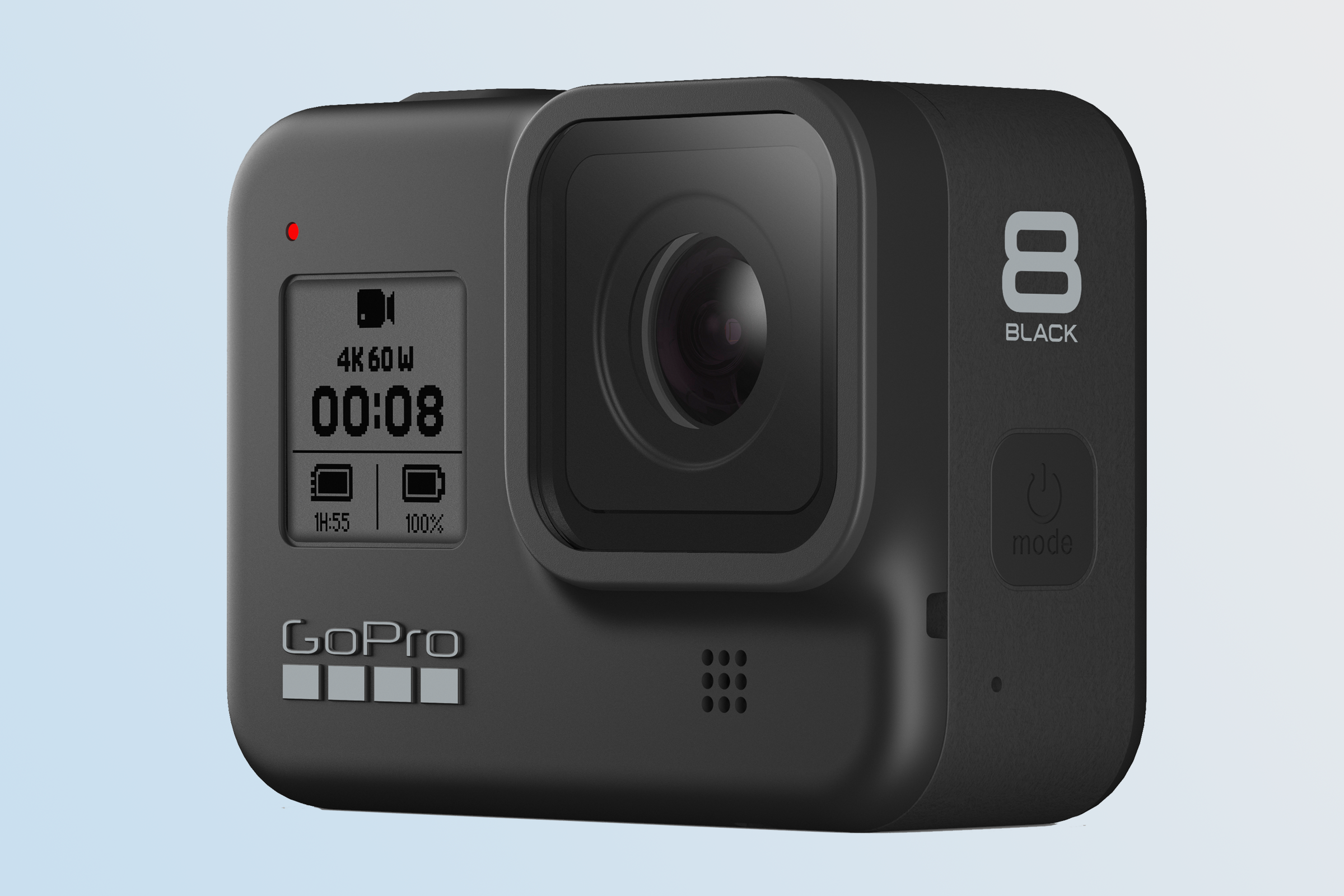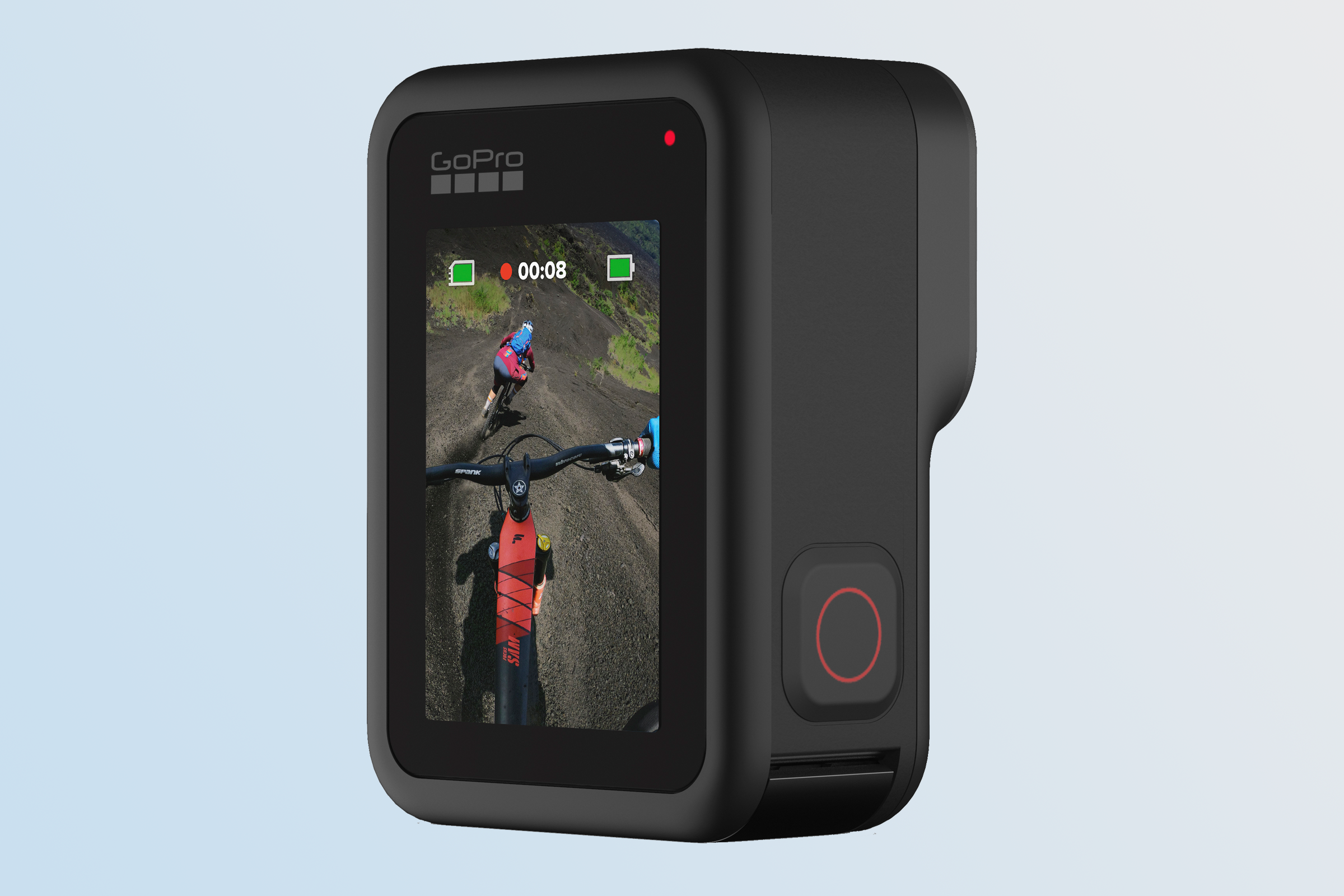GoPro Hero 8 Black vs DJI Osmo Action

GoPro Hero 8 Black vs DJI Osmo Action
The DJI Osmo Action arrived in May 2019 and was the most exciting GoPro-like action camera in a long time. Finally, we had an action cam to recommend that wasn’t the latest GoPro Black model.
GoPro wishes to secure its supremacy with the Hero 8 Black. But does it succeed? Let’s compare these two high-end consumer action cameras to see which you should strap to your helmet, handlebars or dog.
Related: GoPro Hero 8 Black review
GoPro Hero 8 Black vs DJI Osmo Action – When are they available and how much do they cost?
The GoPro Hero 8 Black was announced on October 1 2019, five months after the DJI Osmo Action on May 15.
GoPro’s latest unit is in part a reaction to DJI’s shake-up of higher-end action cameras, although GoPro chooses not to compete too aggressively on pricing.
The GoPro Hero 8 Black costs £379.99, £50 more than the DJI Osmo Action RRP and £100 more than you’re likely to spend online.

Those who are after a front screen for vlogging also need to consider the £79.99 cost of the Display Mod, one of three upcoming GoPro accessories. Although you can pre-order the GoPro Mods in December 2019, they’re unlikely to be available until 2020.
Related: DJI Osmo Action review
GoPro Hero 8 Black vs DJI Osmo Action – Design
DJI Osmo Action is effectively a GoPro with a proper screen on the front. I half-expected GoPro to retaliate with a colour display on the front of its new model, as did many tech commentators.
However, this isn’t the case. The GoPro Hero 8 Black sports the same kind of basic indicator front screen as the Hero 7 Black. This shows the battery life, the current mode and the duration of the current clip; but not a preview of the scene.
GoPro does let you plug the gap with a new system of mods. These include a LED light (£49.99), advanced mic (£79.99) and screen add-on (£79.99) that clip onto the camera.

All three can be used at once, since the microphone housing has two mounting shoes. GoPro calls the Hero 8 Black a “vlogging powerhouse”, and it certainly appears to be with these add-ons attached.
Of course, with those addition you’ll have spent over £600.
Strip both cameras down to their basics and their hardware is quite similar. The DJI Osmo Action measures 65 × 42 × 35 mm and weighs 124g. The Hero 8 Black is 66.3 x 48.6 x 28.4mm and weighs 126g. GoPro’s camera is slimmer and taller, but the difference is by no means momentous.

However, the DJI Osmo Action requires the included mount housing if you don’t simply want to hold the camera. GoPro’s Hero 8 Black does no; it has flick-out magnetised mount fingers on its bottom.
I think the latter is a great feature, if in part because I regularly seem to misplace either camera or mount 20 minutes before they’re needed. This also trims down the real-world dimensions further.
GoPro still sells a Hero 8 Black case, of course, but it’s for protection rather than the basics of mounting.
Both cameras are water-resistant. However, DJI plays a cheeky game of one-upmanship here: GoPro says the Hero 8 Black is water-resistant to 10m, just like the Hero 7 Black. DJI says the Osmo Action is water-resistant to 11m, like almost nothing else.
The industry standard stats for this type of hardware are 5m, 10m, 30m. DJI must simply have done its own testing at 11m depth, so don’t assume the Osmo Action offers really any more water-resistance than the GoPro. This is playground stuff.
Related: GoPro Hero 8 Black vs GoPro Hero 7 Black: 5 key differences

We’ve noticed a few other changes to the Hero 8 Black, though. The sides and top of the camera no longer sport the rubberised finish of older Black-series cameras, plus the lens cover isn’t removable. GoPro says it’s tougher than before, but no glass is immune to scratches and scrapes.
This move is likely to see you persuaded to buy the protective case, or upgrading sooner than you might otherwise. The Osmo Action’s lens cover is removable, so any damage to the glass is less heart-stopping.
GoPro Hero 8 Black vs DJI Osmo Action – Screens and interface
We found the DJI Osmo Action a very easy-to-use camera. It has a generous 2.25in 640 x 360 pixel display on its rear and a 1.4in screen on its front. DJI doesn’t publish the resolution of this front screen for some reason, but its “300ppi” stat suggests it’s around 300 x 300 pixels.

The GoPro Hero 8 Black’s display is relatively conservative, at 2in across with a resolution of 480 x 320 pixels.
GoPro faced criticism following the Osmo Action’s launch, with the latter suggesting that its software is more intuitive and responsive than that of the Hero 7 Black. Custom scene modes are the response in the Hero 8 Black.
You can create up to 10 customisable scenes, four of which you can access quickly through on-screen shortcuts. This is a cheaper and easier approach to improving GoPro’s software than a full redesign, but it also avoids any uncomfortable learning curve for long-standing GoPro’ers.
Cop out? You decide.
Related: Best vlogging cameras
GoPro Hero 8 Black vs DJI Osmo Action – Video modes
Most of the key video modes are replicated across these cameras. You can shoot 4K video at 60fps, and slo-mo at 240fps (8x slow-down) at 1080p.
Some pre-release reports suggested the Hero 8 Black would shoot 120fps at 4K, but this hasn’t panned out.
The GoPro does offer some extra flexibility in terms of field of view, however, and it’s one of the best reasons to stay with the market leader. There are four view modes: SuperView, Wide, Linear and Narrow. Each crops further into the image to provide a less wide-angle look.
Both cameras have 12-megapixel sensors, but GoPro has put more work into the detail capture and sharpness of its image to avoid obvious detail loss when cropping into the sensor. And you can get a much wider view with SuperView, which offers a dramatic look for action and landscapes.

The DJI Osmo Action has just the one standard wide field of view, but you can tweak it slightly. 4:3 uses more of the sensor, and the RockSteady stabilisation and De-Warp features both crop into the view. De-Warp processes your footage to get rid of the fish-eye distortion of the wide-angle lens.
Both cameras feature time-lapse video modes, but GoPro digs further into the extreme of how you might want to use this style of shooting.
Timelapse captures frames much slower than usual, compressing time. The slowest the Osmo Action can shoot is one frame every 30 seconds. So 30fps video turns 15 minutes of real-time action into one second of footage.
The GoPro can slow down to one frame every 60 minutes. You need longer than a day to shoot one second of video. It isn’t for most people, but may appeal to indie film-makers.
There’s also a dedicated timelapse mode for night, which presumably uses a different approach to processing to improve image quality.
GoPro has also taken a few cues from smartphones with the new LiveBurst mode. This captures 1.5 seconds of video before and after you press the shutter, for an easy-to-share three-second clip that doesn’t demand lightning-fast reflexes when shooting fast-moving subjects.
DJI hits back with HDR video, available at up to 4k30 (without stabilisation). However, this is more of a shooting profile than one that uses 10-bit colour or merging of frames like an HDR photo. This means you can achieve similar effects from a GoPro with post-processing, but a lot of us don’t want to do that. It’s a handy feature for the casual shooter.
The GoPro Hero 8 Black does have an improved HDR mode for stills. And GoPro claims to have made significant improvements to the HyperSmooth stabilisation, with the Boost mode. This crops into the image slightly more increase stabilisation effectiveness. Plus, it can attempt to keep your footage straight with the horizon.
DJI already has such a mode, of course; it’s called RockSteady. However, GoPro’s aim here is likely to get closer to the effectiveness of ReelSteady, for example. That’s a brilliant After Effects plug-in that radically improves the effectiveness of stabilisation, even in older GoPros.
GoPro Hero 8 Black vs DJI Osmo Action – Early verdict
The GoPro Hero 8 Black makes some clever upgrades to the well-worn Hero design. Integrated mount fingers are handy for those who vlog, rather than take action camera use to the extremes.
The modular accessory system is neat if, ultimately, useless in practice for now given we won’t see the selection until 2020.
The front camera of the DJI Osmo Action, and its lower price, should lure a few away. Its colour handling and low-light performance are well regarded, too.
Some may miss the GoPro’s “digital lenses”, but let’s not forget that these are based on software, so SuperView is probably the one to cherish most in the GoPro Hero 8 Black.


